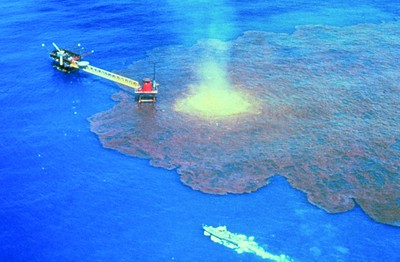Policy Impacts

Center for the Blue Economy research leads to real-world impact.
Center for the Blue Economy research and advocacy has been influential in sound economic and environmental policy outcomes. Collaboration, community activism, and many individuals and organizations working tirelessly have all helped to contribute to these wins.
The Biggest Investment in Climate Change & Ocean Health in U.S. History

April 2023: The Ocean Climate Action campaign has been incredibly successful, leading to the inclusion of billions of dollars in ocean-climate funding in two major federal bills—the 2021 Infrastructure Investment and Jobs Act and the 2022 Inflation Reduction Act. In addition, the Biden-Harris Administration enacted many ocean-climate executive actions and in March 2023 released its own U.S. Ocean Climate Action Plan that largely mirrors our recommendations. This was our first foray into direct policy advocacy, and the payoff has been tangible. Learn more about the work that led up these historic accomplishments and the next steps to turn these policies into action by clicking the link below.
The First Official U.S. Ocean Economic Accounts

June 2020: NOAA and the U.S. Bureau of Economic Analysis announced that for the first time, the United States will officially measure the economic contributions of the oceans and Great Lakes in the national income accounts. For many years, other market sectors had special “satellite accounts” that provide considerably more details than are available in the standard GDP accounts. Although the ocean economy consistently generates a larger share of the U.S. economy than other major natural resources, there was no official measurement until 2020.
This huge policy win is the culmination of years of innovation, advocacy, and research beginning in 1999. That is when Dr. Charles Colgan, the Center for the Blue Economy’s Director of Research, produced the first measurements of the ocean economy that were consistent with other government economic data from the county to the national levels. This work was part of the National Ocean Economics Program, now stewarded by the Center for the Blue Economy. The CBE partnered with Woods Hole Oceanographic Institute to guide NOAA in the creation of these first official U.S. Ocean Satellite Accounts.
The Chumash National Marine Sanctuary
Pending Approval in 2024: The Indigenous-led effort to create the Chumash Heritage National Marine Sanctuary is moving slowly but steadily through the NOAA designation process. In September of 2014, the Center for the Blue Economy produced a report for the Sierra Club entitled The Potential Economic Impacts of the Proposed Central Coast National Marine Sanctuary, which demonstrated that the new sanctuary would be an economic boon to the regional economy. Preserving marine and cultural resources along 140 miles of Central California Coastline, the sanctuary is estimated to generate $23 million in economic activity and create 600 new jobs, while also safeguarding the Central Coast from offshore oil expansion and other threats. If approved by NOAA, this will be the first new marine sanctuary in California in over 20 years, and the first to be Indigenous led with Indigenous leaders as part of the governance structure of the proposed sanctuary. The Chumash are one of the few ocean-going bands among the First Peoples of the Pacific Coast, having stewarded the seas since beginningless time (or by western archaeology 20,000 years). The proposed Chumash Heritage National Marine Sanctuary is a beautiful and diverse seascape with significant historic, archaeological, cultural, aesthetic and biological resources.
Closure of the Last Coastal Sand Mine in the U.S.

July 2017: The CEMEX sand mine located on the Monterey Bay was the last coastal sand mine in the United States. It opened in 1906 in response to construction needs after the great San Francisco earthquake. They extracted roughly 250,000 cubic yards of sand annually, equivalent to a block of sand 10 feet high, 100 feet wide, and over one mile long each year. The beaches to the south were losing sand faster than anywhere else in the state. In April of 2017, the Center for the Blue Economy wrote a letter to the California Coastal Commission and the State Lands Board outlining the negative economic impacts of the sand mine. This followed many years of activism and efforts from the community to bring this issue to the forefront. In July of 2017, the California Coastal Commission unanimously agreed to settle with CEMEX, allowing them three years to end their sand extraction. It was a long battle, and the Center for the Blue Economy is glad to have played a part.
Protecting the South Atlantic from Offshore Oil and Gas

April 2023: When the Bureau of Ocean Energy Management (BOEM) published it’s 2023-2028 National Outer Continental Shelf Oil and Gas Proposed Leasing plan, the areas of leasing were restricted to the Gulf of Mexico and Alaska’s Cook Inlet. The Center actively advocates moving away from the extractive fossil fuel economy for all U.S. states, but we had a direct role in safeguarding the south Atlantic coastline from offshore oil. In December of 2015, the Center for the Blue Economy created a study for the Southern Environmental Law Center entitled, “The Economic Effects of Outer Continental Shelf Oil and Gas Exploration and Development in the South Atlantic Region: Issues and Assessment.” The Center’s report countered a report from oil-industry backed Quest Offshore Resources Inc., which claimed huge economic benefits from the drilling. In 2016, President Obama’s Department of the Interior released the final draft of the five-year plan, which did not allow offshore oil drilling in the southern Atlantic (a reversal of their initial draft, prior to the CBE report). This was a huge victory for coastal communities. The Center for the Blue Economy and National Ocean Economics Program research and data is still often cited in the fight against offshore oil drilling, and the areas of federal leasing still do not include the south Atlantic.
Funding Victories for U.S. Ocean Satellite Accounts and Ocean Acidification

June 2016: The U.S. Space, Science and Technology Committee voted to allocate $1.5 million to NOAA’s National Ocean Service to develop a plan for Ocean Satellite Accounts (a new allocation that led to the 2020 announcement), and $10.5 million was given towards NOAAs research and planning regarding Ocean Acidification (flat funding from the prior year). This was in part due to the Center for the Blue Economy’s Congressional District Reports, which gave each member of the influential committee the data on how much of their district’s GDP relies on the ocean economy. Even those inland districts have considerable income from U.S. coastal economies.

